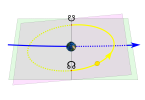When it comes to playing basketball, having the right equipment is essential. One of the most important pieces of equipment is the ball. A basketball must be properly inflated to ensure that it bounces correctly and is easy to handle. The optimal air pressure range for inflating a basketball is from 7.5 to 8.5 psi.
This range is recommended by the NBA, and it is important to ensure that your ball falls within this range. If a ball is underinflated, it will be difficult to dribble and shoot accurately. On the other hand, if a ball is overinflated, it will be too bouncy and difficult to control.
It is important to note that the recommended PSI range may vary depending on the league or organization you are playing with. In NCAA and FIBA women’s basketball, the suggested PSI range is slightly lower, ranging from 6.5 to 8.5 psi. Regardless of the range, it is important to always check the PSI of your basketball before playing to ensure that it is properly inflated.
Understanding PSI and Its Importance in Basketball
When it comes to basketball, air pressure is a crucial factor in the performance of the ball. PSI, or pounds per square inch, is used to measure the air pressure in a basketball. The optimal air pressure range for inflating a basketball is from 7.5 to 8.5 psi.
It is crucial to maintain the appropriate air pressure in your basketball for multiple reasons. Firstly, it impacts the ball’s bounce. Overinflated balls tend to bounce too high, making them challenging to control. Conversely, underinflated balls bounce too low and do not respond well to dribbling or shooting.
Air pressure also affects the grip of the ball. If the ball is overinflated, it will be slippery and difficult to hold onto. Conversely, if the ball is underinflated, it will feel soft and squishy, making it harder to grip and control.
Furthermore, the precision of your shots can be influenced by the air pressure in a basketball. If the ball is overinflated, it will be more likely to bounce off the rim or backboard instead of going through the hoop. If the ball is underinflated, it may not have enough energy to make it to the basket.
Standard PSI for Basketball
In basketball, it is necessary to inflate the ball to a specific pressure as it impacts the ball’s bounce, handling, and shooting ability. In this section, we will discuss the standard PSI for basketball.
Regulation PSI for Professional Leagues
Professional basketball leagues, such as the NBA, WNBA, and FIBA, have specific regulations regarding the air pressure of the game ball.
The official game ball for the NBA should be inflated within the recommended air pressure range of 7.5 to 8.5 PSI. However, for women’s basketball in the WNBA and FIBA, the suggested air pressure range is slightly lower, ranging from 6.5 to 8.5 PSI.
It is important to note that these are just recommendations, and some players may prefer a different air pressure. However, using the recommended air pressure can help ensure consistency and fairness in the game.
Recommended PSI for Recreational Play
The suggested air pressure range for a basketball during recreational play is also from 7.5 to 8.5 PSI. This range provides a good balance between bounce and handling. However, the ideal air pressure may vary depending on the player’s preference, the ball’s material, and the playing conditions.
Using an air pump equipped with a built-in pressure gauge is an effective way to ensure that the ball is inflated to the appropriate pressure. It is important not to overinflate the ball, as this can cause it to bounce too high and make it difficult to handle.
In summary, the standard PSI for basketball is between 7.5 and 8.5 PSI for professional and recreational play. Using the recommended air pressure can help ensure consistency and fairness in the game, but the ideal air pressure may vary depending on the player’s preference and the playing conditions.
Effects of PSI on Basketball Performance
Ball Control and Dribbling
The air pressure level in a basketball has a significant impact on ball control and dribbling. If the ball is overinflated, it will bounce too high, leading to difficulty in control.
Conversely, if the ball is underinflated, it will be flat and won’t bounce correctly, making dribbling challenging. Hence, it is crucial to maintain the optimal PSI range of 7.5 to 8.5 psi for optimal ball control and dribbling.
Shooting Accuracy
Air pressure also plays a crucial role in shooting accuracy. If the basketball has too much air pressure, the ball will bounce off the rim and backboard with more force, making it difficult to shoot accurately.
Conversely, if the basketball has too little air pressure, the ball will not bounce enough, leading to inaccurate shots. Therefore, it is essential to maintain the recommended PSI range of 7.5 to 8.5 psi for optimal shooting accuracy.
Passing Efficiency
The amount of air pressure in a basketball also affects passing efficiency. If the basketball has too much air pressure, it will bounce too high and too fast, making it difficult to catch and pass accurately.
On the other hand, if the basketball has too little air pressure, it will not bounce enough, leading to inaccurate passes. Therefore, it is essential to maintain the recommended PSI range of 7.5 to 8.5 psi for optimal passing efficiency.
Overall, maintaining the recommended PSI range of 7.5 to 8.5 psi is crucial for optimal basketball performance. It ensures optimal ball control and dribbling, shooting accuracy, and passing efficiency.
Methods to Measure PSI in Basketballs
To ensure that your basketball has the right amount of air pressure, you need to measure its PSI. There are two main methods to measure PSI in basketballs: manual pressure gauges and digital pressure gauges.
Manual Pressure Gauges
Manual pressure gauges are simple and affordable tools to measure the PSI of your basketball. Here are the steps to use a manual pressure gauge:
- Insert the needle of the gauge into the air valve of the basketball.
- Hold the gauge in place and wait for the needle to stop moving.
- Read the PSI measurement on the gauge.
It’s important to note that manual pressure gauges can be less accurate than digital pressure gauges. However, they are still a reliable way to measure PSI in basketballs.
Digital Pressure Gauges
Digital pressure gauges are more expensive but also more accurate than manual pressure gauges. Here’s how to use a digital pressure gauge:
- Turn on the gauge and select the PSI measurement option.
- Insert the nozzle of the gauge into the air valve of the basketball.
- Hold the gauge in place and wait for the measurement to appear on the screen.
Digital pressure gauges are more reliable than manual pressure gauges, but they require batteries and can be more expensive. However, digital pressure gauges are a great option for those who want a more accurate measurement of their basketball’s PSI.
Remember, it’s essential to measure the PSI of your basketball regularly to ensure that it’s suitable for play. By using either a manual or digital pressure gauge, you can quickly and easily measure the PSI of your basketball and adjust it as needed.
How to Adjust PSI in Basketballs
Adjusting the air pressure of a basketball is an important step in optimizing its performance. Here are some steps to follow when adjusting the PSI in your basketball:
- Check the recommended PSI range: Before adjusting the PSI, make sure to check the recommended range for your basketball. The recommended range is usually between 7.5 and 8.5 PSI for official basketballs.
- Use a pressure gauge: To accurately measure the PSI, use a pressure gauge. This tool will help you determine whether the ball is overinflated or underinflated.
- Release air if the ball is overinflated: If the ball is overinflated, use a needle pump to release air until the PSI is within the recommended range. Do not release too much air at once as this can cause the ball to become underinflated.
- Inflate the ball if it is underinflated: If the ball is underinflated, use a needle pump to add air until the PSI is within the recommended range. Do not inflate too much air at once as this can cause the ball to become overinflated.
- Test the bounce and feel of the ball: After adjusting the PSI, test the bounce and feel of the ball to ensure it is performing optimally. A properly inflated ball should bounce evenly and feel comfortable in your hands.
Remember to adjust the PSI of your basketball regularly to maintain its performance. Overinflated or underinflated balls can affect the game and increase the risk of injury.
Potential Risks of Incorrect PSI
Maintaining the correct air pressure in your basketball is crucial for optimal performance and safety. Here are some of the potential risks of playing with a basketball that has incorrect PSI:
Poor Bounce and Control
If the air pressure in your basketball is too high, it will bounce too much and be difficult to control. On the other hand, if the air pressure is too low, the ball will not bounce properly and will be flat. This can impact your ability to dribble, shoot, and pass accurately.
Increased Risk of Injury
Playing with a basketball that has incorrect PSI can increase the risk of injury. A ball that is too hard can cause hand and wrist injuries, while a ball that is too soft can cause finger injuries. Additionally, a ball that does not bounce properly can lead to awkward landings and ankle injuries.
Damage to the Ball
If the air pressure in your basketball is too high, it can damage the ball and cause it to burst. This can render the ball unusable and require you to purchase a new one. It’s important to regularly check the air pressure in your ball to ensure it is within the recommended range.
Inconsistent Performance
Playing with a basketball that has incorrect PSI can lead to inconsistent performance. Shots and passes may be inaccurate, and the ball may not respond the way you expect it to. This can be frustrating and impact your overall enjoyment of the game.
In summary, maintaining the correct air pressure in your basketball is crucial for optimal performance and safety. Playing with a ball that has incorrect PSI can lead to poor bounce and control, increased risk of injury, damage to the ball, and inconsistent performance. Be sure to regularly check the air pressure in your ball to ensure it is within the recommended range.
Conclusion
To sum up, comprehending the significance of air pressure in basketball is essential for players, coaches, and referees. The air pressure in a basketball is measured in PSI and is regulated by various basketball organizations, including the NBA and FIBA.
Maintaining the correct PSI in your basketball can significantly impact its performance, prevent injuries, and ensure fair play. It is advisable to check the pressure of your basketball before each game or practice to ensure it is within the appropriate range.
Remember, overinflating or underinflating your basketball can result in negative consequences such as decreased bounce, difficulty handling the ball, or even damage to the ball itself. Use a reliable air pump and pressure gauge to accurately inflate your basketball to the recommended PSI.
By following these guidelines and understanding the importance of air pressure in basketball, you can improve your game and ensure a fair and safe playing experience for all.







